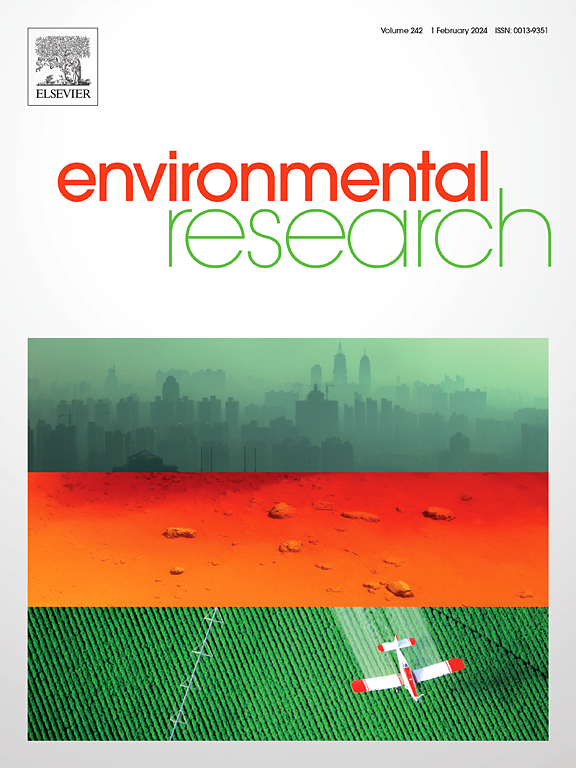Rewiring heme biosynthesis for improved pollutant degradation by Shewanella oneidensis
IF 7.7
2区 环境科学与生态学
Q1 ENVIRONMENTAL SCIENCES
引用次数: 0
Abstract
The slow rate of extracellular electron transfer (EET) in electroactive microorganisms poses a major bottleneck for the practical application of bioelectrochemical systems, such as microbial fuel cells (MFCs) and electrochemical remediation technologies. In Shewanella oneidensis, multi-heme cytochromes, integral to the metal reduction (Mtr) transmembrane electron conduit, play a critical role in determining EET efficiency. However, heme availability is constrained by the bacterium's native expression capacity, limiting the potential for efficient EET. To address this, we employed a modular synthetic biology approach, designing four functional modules to redirect metabolic pathways toward heme synthesis and assembly. Our results demonstrate that a substantial increase in heme levels broadens the EET pathway in S. oneidensis, enhancing electron flux and transfer rates. This is evidenced by a peak current density of 1311.3 mA/m2 in microbial electrochemical cells (MECs) and a maximum voltage output of 311.5 mV in MFCs. Furthermore, in anaerobic reduction experiments using methyl orange as a model azo dye, the engineered strain exhibited superior performance, achieving a first-order reaction rate constant of 0.547 h−1. This indicates that elevated heme levels markedly improve the bacterium's capacity to degrade organic pollutants. These findings not only confirm the pivotal role of heme in amplifying the EET pathway of S. oneidensis but also offer an innovative and practical strategy to overcome rate-limiting challenges in bioelectrochemical applications.
希瓦氏菌重组血红素生物合成改善污染物降解
电活性微生物的细胞外电子转移(EET)速度缓慢,是制约微生物燃料电池(mfc)和电化学修复技术等生物电化学系统实际应用的主要瓶颈。在希瓦氏菌中,多血红素细胞色素是金属还原(Mtr)跨膜电子管的组成部分,在决定EET效率方面起着关键作用。然而,血红素的可用性受到细菌天然表达能力的限制,限制了高效EET的潜力。为了解决这个问题,我们采用了模块化合成生物学方法,设计了四个功能模块来重新定向血红素合成和组装的代谢途径。我们的研究结果表明,血红素水平的大幅增加拓宽了叶参的EET通路,增强了电子通量和传递速率。微生物电化学电池(MECs)的峰值电流密度为1311.3 mA/m2, mfc的最大电压输出为311.5 mV。此外,在以甲基橙为模型偶氮染料的厌氧还原实验中,工程菌株表现出优异的性能,达到了0.547 h−1的一级反应速率常数。这表明血红素水平的升高显著提高了细菌降解有机污染物的能力。这些发现不仅证实了血红素在放大野刺草EET通路中的关键作用,而且为克服生物电化学应用中的速率限制挑战提供了一种创新和实用的策略。
本文章由计算机程序翻译,如有差异,请以英文原文为准。
求助全文
约1分钟内获得全文
求助全文
来源期刊

Environmental Research
环境科学-公共卫生、环境卫生与职业卫生
CiteScore
12.60
自引率
8.40%
发文量
2480
审稿时长
4.7 months
期刊介绍:
The Environmental Research journal presents a broad range of interdisciplinary research, focused on addressing worldwide environmental concerns and featuring innovative findings. Our publication strives to explore relevant anthropogenic issues across various environmental sectors, showcasing practical applications in real-life settings.
 求助内容:
求助内容: 应助结果提醒方式:
应助结果提醒方式:


